Maintaining an effective online presence is absolutely essential for businesses these days. Whether you are trying to reach consumers directly or market your products or services to other companies, having compelling and engaging content is key to capturing the attention of your target market.
After all, in today's digital age, consumers have countless options available online, and they are quickly able to move on if a website doesn't immediately pique their interest.

Table of Contents
What is Content Marketing?
Benefits of Using Content for Marketing
Types of Content Marketing
How to Build Your Content Marketing Strategy
Examples of Content Marketing Done Right
Content Marketing FAQs
To effectively capture these potential customers, businesses need to thoughtfully design their websites and marketing materials to engage and entice readers from the first moment.
This means using crisp, fresh language that is both informative and interesting, incorporating eye-catching images or videos, and staying on top of ever-changing trends in order to remain relevant.
By doing so, businesses can not only create a positive impression with potential new customers but also build lasting relationships by delivering consistently high-quality content that meets their needs and interests.
Whether you're a small business owner or managing marketing efforts for a larger corporation, the bottom line is that compelling content is critical for attracting the attention of your target audience online.
This is why Content Marketing is one of the most important aspects of any marketing strategy.
In this article, we'll take a closer look at what Content Marketing is, the key strategies and tactics that are involved, and how your business can get started with this powerful marketing approach.
What Is Content Marketing?
Content Marketing touches on the process of creating and sharing valuable content in order to engage potential customers and build long-lasting relationships with them.
It is a type of inbound marketing that focuses on providing consistent, high-quality content that meets the needs and interests of your target audience.
There are several key strategies and tactics involved in Content Marketing, including creating original content that is relevant to your target market; incorporating eye-catching images or videos into your content; staying up-to-date on current trends in order to remain relevant, and using various online platforms to engage and connect with your audience.
When did the Use of Content Marketing Start?
Content Marketing has been around for centuries, with some of the earliest examples dating back to the late 1800s. One of the most famous examples is John Deere's The Furrow magazine, which was first published in 1895 and is still being distributed today.
This example illustrates how Content Marketing strategy can be used effectively to build brand awareness and loyalty among customers. In fact, one study found that 85% of John Deere customers felt a stronger connection to the company after reading The Furrow.
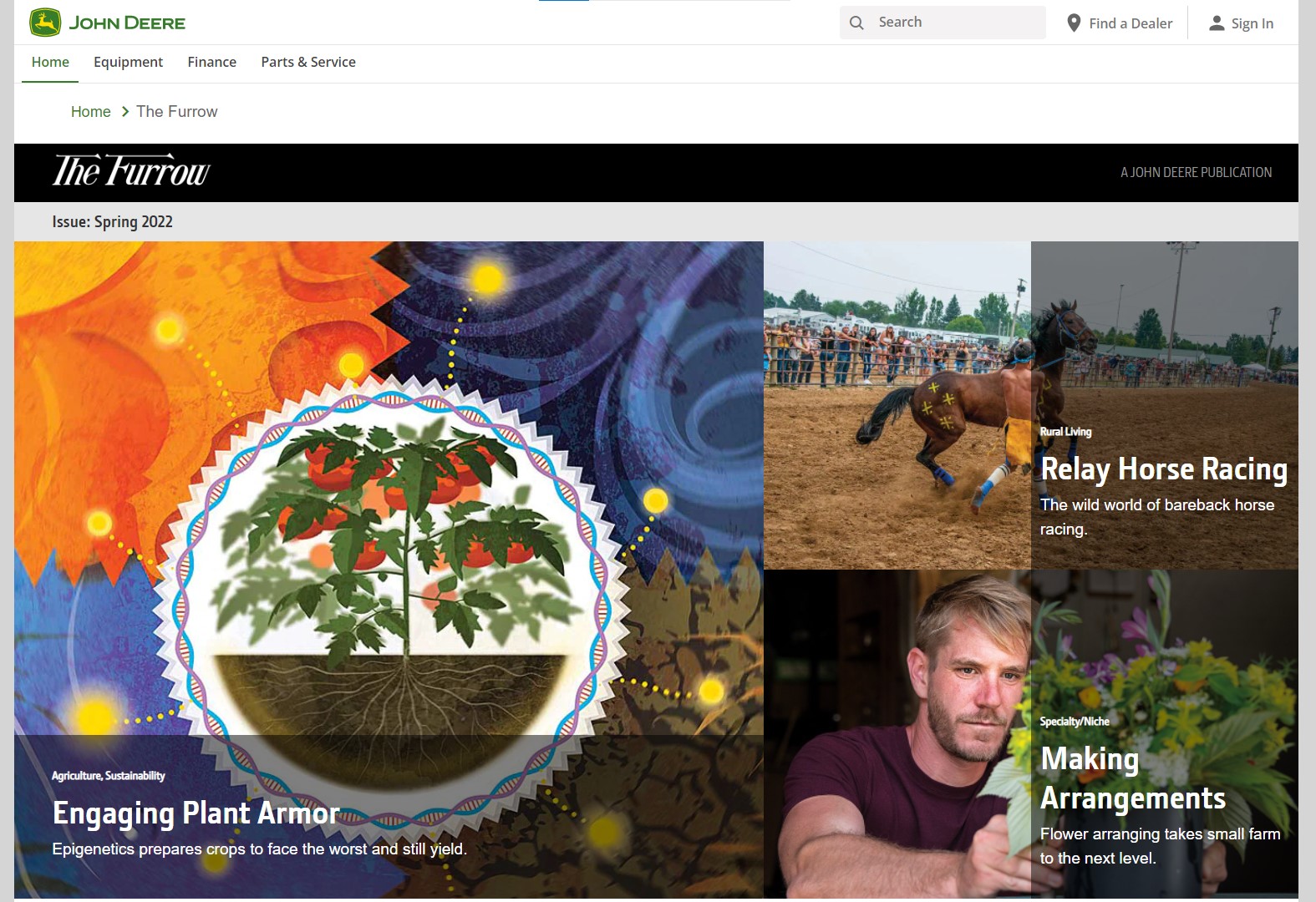
As you can see, Content Marketing is not a new concept; however, it has become increasingly important in recent years as we have entered the digital age. With so much competition online, businesses need to find ways to stand out from the crowd and engage potential customers with quality content.
The Benefits of Using Content Marketing
There are many advantages to using Content Marketing as part of your overall marketing strategy. In fact, many marketers (myself included) believe that marketing strategies are not effective without the use of convincing content.
You may actually be using some form of content marketing strategy in your own promotional methods; you just didn't know it yet!
So before we move on to the types of content marketing and how you can get started, let us first talk about why you should do it.
1. Helps Increase Brand Awareness
If you want people to know about your business, then Content Marketing is one of the most effective ways to achieve this goal. By creating and sharing quality content, you can attract new readers or viewers who may not have heard of your business before.
Content marketing also allows you to build a relationship with your target customers by providing them with valuable information that they can use. As you continue to engage potential customers with high-quality content, they will begin to trust and respect your brand.
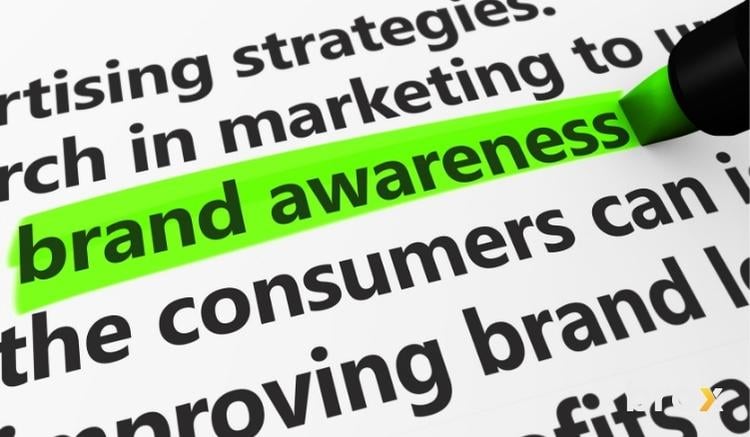
Brand awareness is essential for any business, but it is especially important for small businesses or those that are just starting out. It is the first step in getting potential customers interested in your products or services because your audience needs to know that you exist first.
Content Marketing can give you the exposure you need to attract new customers and grow your business.
2. More Engaging than Traditional Advertising
Content marketing is more effective than traditional advertising because it is not as intrusive. When people are bombarded with ads everywhere they turn, they become desensitized to them and are less likely to pay attention.
With content marketing, potential customers can choose to engage with your content if they find it interesting or valuable. This makes for a much more positive experience for the reader and helps build trust between you and your target audience.
And in today's digital marketing practices, engagement is one of the best metrics for determining the success of your campaigns.
3. Builds Customer Loyalty and Retention
All businesses want loyal customers who are invested in their brand and will continue to buy from them over time. Content marketing can help you achieve this goal because it allows you to build a relationship with your customers by providing them with valuable information that they need or want.
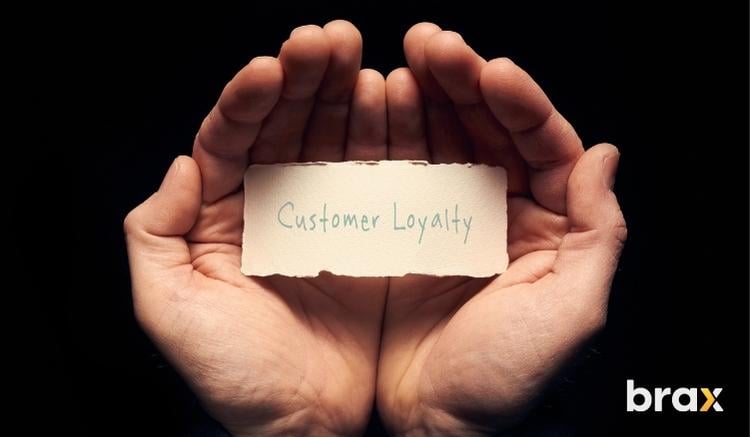
By consistently creating high-quality content, you can ensure that your target audience will always have access to the information they need and will want to keep coming back to you for more.
And that's not just information for knowledge's sake—but content that actually helps them solve a problem they're facing.
Content marketing can help turn first-time customers into lifelong fans of your brand.
4. Generate More Leads and Sales
One of the main goals of any business is to generate leads and sales, and content marketing can help you achieve this goal. By creating quality content that educates or entertains your target audience, you can encourage them to take action, such as subscribing to your email list or making a purchase from your online store.
In fact, most lead-generating techniques of today involve some form of content. Whether you're using a blog, an ebook, or some sort of interactive quiz, the success of your lead generation efforts will depend on how well your content engages and converts readers.
By capitalizing on key buyer personas and understanding what your target audience is looking for, you can create engaging content that speaks directly to the needs of your customers.
5. Cost-Effective Marketing Strategy
Content marketing is one of the most cost-effective marketing strategies because it does not require a large budget to be successful. There are many free or low-cost ways to create and share content, such as through social media or your company blog.
Of course, you can also choose to invest more money in paid content distribution methods, such as online ads or using influencers to promote your content. But even if you do choose to invest more money in your content marketing campaigns, it is still likely to be less expensive than other marketing strategies, such as TV, radio, and billboard advertising.
6. Improves SEO Rankings and Drives Traffic to Your Website
Quality content can also help improve your website's search engine optimization (SEO) rankings. This is because Google and other search engines favor websites that provide useful and relevant information to users.
By creating quality content, you can attract more organic traffic to your website, which can lead to more leads and sales. In addition, regular updates to your website's content can help you rank higher in search results and keep people coming back for more.
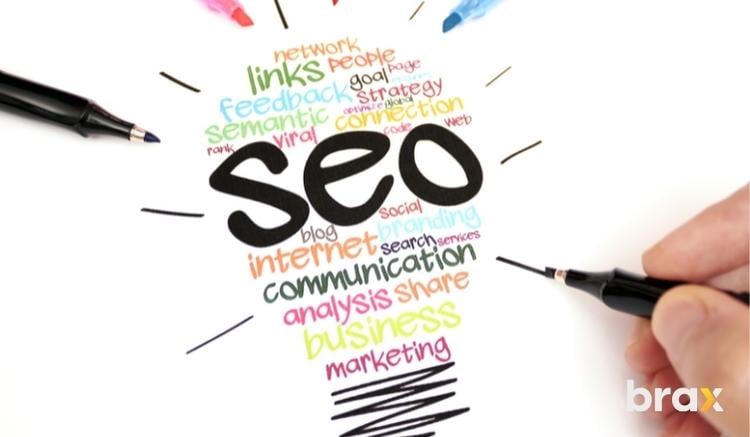
7. Helps You Establish Authority and Credibility
Content marketing allows you to connect with your target audience on a more personal level. By creating quality content that is relevant to their interests, you can build a connection with potential customers and establish yourself as an authority in your industry.
This can help you gain the trust of your target market and encourage them to do business with your company. And as we all know, building trust is crucial when it comes to making a sale or convincing someone to buy into your brand.
So if you're looking for an effective marketing strategy that will grow your business, then content marketing may be the solution for you! With regular updates, targeted outreach, and quality content that speaks to your customers' interests and needs, you can attract new customers and build customer loyalty for lasting success.
Overall, there are many reasons why content marketing is a crucial part of any effective marketing strategy. It helps increase brand awareness, engage potential customers better than traditional advertising, and build customer loyalty and retention. If you want to grow your business online in today's competitive environment, then content marketing is definitely something that you should consider using.
Types of Content Marketing
When it comes to content marketing, there are many different types of content that you can use to reach your target audience. It all depends on the goals of your content marketing strategy and what type of content will best resonate with your ideal customers.
Some common types of content that are commonly used for marketing include blog posts, ebooks, infographics, social media updates, case studies, how-to guides, video tutorials, product reviews, and more.
As long as there are new ways to reach and connect audiences, new forms of content can come up, and the current ones we have may evolve.
Let's discuss all the different forms of content marketing you can implement.
1. Blog Posts
Blog posts are a great way to share your thoughts and ideas with the world and can be a great way to attract new customers to your business. They can be used to educate your target audience about your products or services, share insights about your industry, or simply entertain your readers.
In recent years, there has been a growing trend of businesses using blog posts as a form of content marketing strategy. This is because blog posts offer a number of advantages over other forms of marketing content, such as television ads or print ads.

For one, blog posts are more cost-effective to produce than traditional advertising content. Additionally, blog posts can be easily shared and circulated online, allowing businesses to reach a larger audience with their marketing message.
Finally, blog posts provide businesses with an opportunity to establish themselves as thought leaders in their industry by sharing their expertise and knowledge on a given topic.
As a result, it is not surprising that more and more businesses are turning to blog posts as a way to reach and engage their target market.
When writing a blog post, it is important to consider what you want to achieve. Are you looking to generate leads or simply raise brand awareness? Once you know your objectives, you can start to plan your content.
Make sure to include keyword-rich titles and descriptions, as this will help your blog post to rank highly in search engines. Try to write in a natural, engaging style and avoid sounding like a sales pitch.
If you can provide valuable information that helps your reader to solve a problem or make a decision, you are more likely to win their business.
2. eBooks
Another popular content marketing strategy is the creation of eBooks. An ebook can be a great way to educate your potential customers about the benefits and features of your product or service, as well as build trust and credibility for your brand.

When creating an eBook, it is important to focus on quality over quantity. Rather than simply writing a long list of product features, try to provide useful and actionable information that will genuinely help your readers solve a problem or make a decision. This means including case studies, testimonials from past clients, industry research, etc.
Once you have put together an attractive and high-quality eBook, you can share it with your target market using social media platforms, email marketing campaigns, or paid advertising campaigns.
If you are able to produce a well-written, credible and valuable eBook, it can be a great way to attract new customers and boost sales for your business.
3. Infographics
Infographics are another type of visual content that is commonly used for marketing purposes. These visually appealing graphics allow businesses to share information about their products or services in an engaging and easily digestible format.
Infographics are particularly effective at attracting the attention of your target audience, as they are more likely than text-based content to get shared on social media platforms such as Facebook, Twitter, and Instagram. This means that with the right strategy, businesses can reach much larger audiences with infographics than they could with traditional marketing content.

There are a number of things to consider when creating an infographic, including your target audience, the desired tone of your message, and how you plan to distribute the infographic.
It is also important to choose a relevant topic for your infographic. If it does not resonate with your target market, or if it lacks valuable information about your industry or products and services category, it is unlikely that people will be interested in sharing it. However, if you can produce high-quality infographics that present new ideas or interesting insights about your industry, they can be an effective way to win over new customers for your business.
4. Social Media
One popular type of content that is commonly used in marketing today is social media updates. Social media platforms like Twitter and Facebook allow you to easily share short bits of information with your followers.

These updates might include things like news stories related to your industry or company, interesting facts or statistics about your product or service offering, images or videos showcasing your products or services in action, customer testimonials, or success stories featuring customers who have used your products and services.
By sharing this type of content on a regular basis, you can keep your followers engaged with your brand and build trust and credibility for your business.
Additionally, social media updates provide an easy way for customers to share your content with their own networks, potentially reaching a much larger audience than you could on your own.
Even the tiniest social media post—a tweet, if you will—can be part of your content marketing strategy. This is where understanding long-form and short-form content comes into play.
If gaining organic impressions and viewership is difficult, you can always go for paid social media marketing. This allows you to boost your posts or target specific audiences, driving increased traffic and engagement for your brand.
5. Videos
Another popular form of marketing content is videos. In today’s digital age, people are increasingly watching videos online, making them an effective way to reach your target market.
Videos can be used in a number of ways to promote your business. These can include:
-
Explanatory videos
These are useful for demonstrating the benefits of your products and services and can help win over new customers. For example, if you sell yoga equipment, you might create a video that shows people using your products to help them achieve certain poses.
-
Product Highlights videos
These can be used to showcase specific features of your products and can also be very effective at spurring sales. For example, if you sell high-end smartphones, you might create a video that highlights the speed and performance of its camera.
-
Testimonial videos
By sharing customer testimonials on social media platforms or in blog posts or email marketing campaigns, you can build trust for your brand and demonstrate the positive results customers have achieved by using your products and services.

-
Success story video
These are similar to testimonial videos but typically feature customers who have achieved a significant milestone or goal as a result of using your products or services. For example, if you sell weight-loss products, you might feature a customer who has lost 100 pounds after using your products for six months.
-
Educational videos
These can be used to provide valuable information about your industry or product/service category and can help establish your business as an authority in your field.
-
Storytelling videos
Storytelling can be particularly effective at engaging customers, as they often use relatable characters and compelling narratives to showcase the benefits of your products or services. For example, if you sell coffee products, you might create a video that tells the story of a busy mom who has little time for coffee breaks but is able to enjoy a hot cup of joe thanks to your coffee pods.
-
Influencer videos
If you work with influential people or organizations in your industry, such as popular bloggers or industry associations, you can leverage their authority and reach by having them create videos that promote your brand.
For example, if you sell women’s clothing, you might have a popular fashion blogger create a styling video featuring some of your clothes. Even if you don't work with one currently, you can reach out to an influencer whose audience falls under your target market.
Check our complete guide to influencer marketing to learn how to do this. It is one of the best forms of brand awareness strategies available today.
There are many different types of marketing videos that you can create to promote your business and engage with your target market. By choosing the right type of content and focusing on quality over quantity, you can attract new customers and build lasting relationships with current customers for your business.
Whatever type of video you decide to create, it is important that it is high-quality, engaging, and relevant to your target market. Additionally, you will want to optimize your videos for search engines, so they are easily discoverable by potential customers who are searching for information about your industry or product/service category.
6. Photos
Images are an excellent way to showcase the unique benefits and features of your products or services, as well as your company culture and brand identity.
People nowadays are more critical of the images they see. Sometimes, people read more into images to find the "deeper meaning."
Photos can be used in a variety of ways to promote your business online. They can:
- Be shared on social media platforms like Facebook, Twitter, Instagram, and Pinterest to increase brand awareness and drive traffic back to your website or blog.
- Be featured on product pages or in blog posts so customers can see what different features look like in action. For example, if you sell high-end clothing, you might create a gallery of images that show off the fine details of some of your most popular pieces, such as handcrafted buttons or intricate stitching patterns.
- Be used in email marketing campaigns to showcase new products or highlight special offers.
- Be used to encourage engagement and interaction with your brand.
When selecting photos for your website or social pages, be sure to choose high-quality images that are relevant to your target market and consistent with your brand identity.
Additionally, you will want to make sure that any photos you use are properly optimized for search engines, so they appear in relevant searches.

Furthermore, many images are edited to capture the audience's attention even further. Modern images that capture interest include:
- GIF - These are fun, moving images that often capture a feeling or action.
- Polaroid - These images look like they were taken with an old-style Polaroid camera and often have a cool, retro feel to them.
- Animated - These images are brought to life by adding movements, such as blinking eyes or moving heads. GIFs are a type of animated image that is so popular nowadays. It allows people to express their thoughts and feelings with a simple click.
Choosing the right type of photos for your marketing campaigns can help you better engage with your target market and promote brand awareness for your business. With the right images, you can create a more memorable and engaging online experience that drives customers to take action!
7. Case Studies
To really drive home the benefits of using your products or services, it can be useful to create case studies that highlight specific success stories and results achieved by customers who have used them.
These case studies can take many forms but typically include detailed information about how customers used your products or services and what results they were able to achieve as a result.

By sharing case studies on your website, in blog posts or articles, or in email marketing campaigns, you can show potential customers how your products or services have helped others and why they should consider using them as well.
Want convincing examples? Why not take a look at our own case studies?
8. How-to Guides
While educational videos and testimonial videos can help build your brand and establish you as an authority in your industry, how-to guides are also a great way to provide valuable content that will engage customers.
How-to guides typically take the form of step-by-step instructions or tutorials that walk customers through a specific process or product feature. This is a popular content marketing strategy.

For example, if you sell software products, you might create a guide that walks users through setting up their first webinar on your platform. Or, if you sell workout equipment, you could create an article that shows users different exercises they can do at home with your equipment.
By providing this type of valuable information to potential customers in an easy-to-follow format, you can help them learn to use your products effectively and achieve their desired results.
9. Advertorials, Sponsored Posts, and Press Releases
An advertorial, or sponsored content, is a type of marketing content that blends editorial and advertising. This means that it presents information to readers in a way that feels like an article or blog post while also clearly promoting your brand or products.

Advertorials are often written by an industry expert who your company pays to create this content on their behalf. For example, if you sell sports supplements, you might hire a nutritionist to write an article on how different types of supplements can help athletes meet their training goals.
The key to a successful advertorial is blending advertising into content in a way that feels natural, helpful, and valuable to your audience. By providing high-quality and actionable information to potential customers, you can improve engagement with your brand and drive more conversions.
Sponsored posts are a form of content marketing in which a company pays a blogger or other content creator to produce content that promotes their products or services.
This type of content is often seen as more trustworthy than traditional advertising and can be a great way to reach new customers and build brand awareness.
It's important to note that sponsored posts should still be high quality and provide valuable information to readers. If they don't, readers are likely to lose trust in both the blogger/content creator and the sponsoring company.
If you work in the travel industry, you might have a well-known travel blogger write about why they love your destination and why potential visitors should consider it as well.
Press releases are a type of content marketing in which a company communicates news about its products or services to the media.
This type of content can be a great way to build brand awareness and generate publicity for your business.

Press releases typically follow a specific format and must include certain key information, such as the name of the company, the product or service being promoted, the date of the release, and contact information.
Whether you choose to use an advertorial, press release, or sponsored post for content marketing purposes, remember that quality is key. Readers should be able to easily distinguish between the writing style and brand messaging of this type of content versus regular editorial content on your website or blog.
10. Product Reviews
As a business owner, you know that it can be difficult to stand out in the competitive world of e-commerce. One way to do this is by creating high-quality product reviews.
Product reviews are essentially testimonials from customers who have used your products and want to share their experiences with others. This could include reviewing specific features or benefits of your products, giving potential customers an idea of how they work and how easy they are to use or sharing personal stories about how using your products has made a positive impact on their lives.

By publishing product reviews on your website, blog, or social media pages, you can build trust with potential customers and differentiate yourself from other brands in your industry.
Additionally, if you have a product that you’re particularly proud of, you can encourage customers to leave reviews by offering incentives like discounts or free shipping.
As you can see, there are many different types of content that you can create to engage customers and build your brand.
Beyond using quality over quantity when creating content, it is also important to optimize your content for search engines so that it can be found by potential customers who are searching for information related to your industry or product/service category.
By doing this, you will ensure that the valuable content you create contributes towards marketing goals such as increasing website traffic, generating leads, and building customer loyalty.
How to Build Your Content Marketing Strategy
Now that you understand the different types of content that you can create, it’s time to start planning your content marketing strategy.
1. Prepare Your Target Audience
The first step in any marketing campaign is identifying your target audience. This involves creating buyer personas or semi-fictional representations of your ideal customers.
Likewise, this includes understanding who they are, what their needs and wants are, and where they can be found online.
Visit our article on What is Target Marketing and How to Apply It to Your Business to learn all about how to identify and learn more about your target audience (if you still haven't).

Once you have a good understanding of your target audience, you can begin creating content that appeals to them and meets their needs.
For example, if you sell products for businesses, your target audience might be small business owners or entrepreneurs. In this case, you would want to create content that speaks to their needs, such as articles on time management tips or advice on how to start and grow a business.
By understanding who you are trying to reach with your content, you can create more targeted and effective content that resonates with them on a personal level.
Not sure how to create buyer personas? Check out our blog post on How to Build the Perfect Targeting Persona.
2. Create a Well-Defined Set of Goals
The next step is to identify your marketing goals. What do you want to achieve with your content marketing strategy?
Some common goals include increasing brand awareness, generating leads or sales, or improving customer loyalty. Once you have identified your goals for your content marketing efforts, you can create content that is aligned with these objectives.

For example, if your goal is to increase brand awareness, you might create informative blogs or videos that introduce potential customers to your products or services.
On the other hand, if your goal is to generate leads or sales, you might create case studies or white papers that showcase customer success stories.
Whatever your goals may be, it is important to have a clear understanding of what you want to achieve so that you can align your content marketing efforts accordingly.
3. Choose the Type of Content
Now that you know your target audience and what you want to achieve with your content marketing strategy, it’s time to start thinking about the type of content you want to create.
As we mentioned earlier, many different types of content can be used for content marketing. The best way to decide which type of content is right for your business is to consider your goals and objectives. And lest we forget—the budget.
For example, if your goal is to increase brand awareness, you might want to create informative blog posts or videos that introduce potential customers to your products or services.

On the other hand, if your goal is to generate leads or sales, you might create case studies or white papers that showcase customer success stories.
You might also want to create eBooks, webinars, or infographics to educate your audience about your products or services.
The type of content you choose should also depend on where in the buyer's journey your audience currently is.
Are they at the awareness stage?
Social media posts and influencer marketing can help with that.
Are they at the interest stage?
Product demonstration videos, blog posts, and product descriptions can be your best bet.
Are they at the decision stage?
Advertorials, case studies, and product reviews can work wonders.
There are many different types of content that you can create, so it’s important to choose the ones that will work best for your business and will match the amount of money that you can possibly shell out for each content marketing strategy (if you plan on having more than one or if you plan on using a combination of several).
4. Map Out A Solid Content Distribution Plan
Once you have created your content, it’s time to start thinking about how you can get it in front of your target audience.
This is where content distribution comes in. Content distribution is the process of promoting and distributing your content to reach your target audience.
There are many different ways that you can distribute your content or gain eyes on it, such as through a social network, email marketing, paid advertising, or search engine optimization (SEO) or you need a content syndication platform.
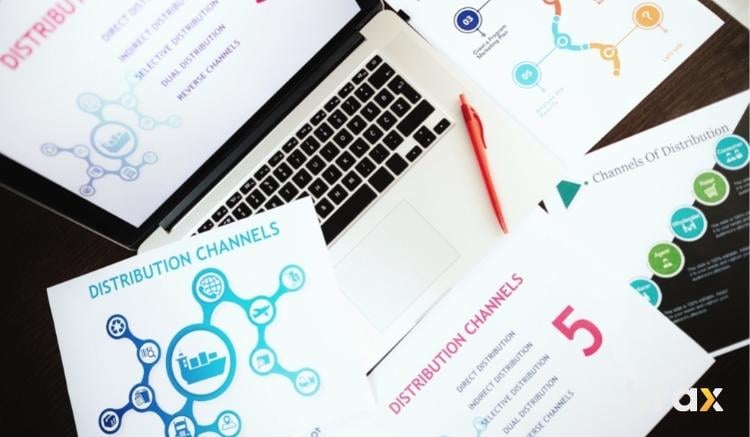
It’s important to have a solid plan for how you will promote and distribute your content so that you can reach as many people as possible.
For example, if you create a blog post, you might want to promote it on social networks or through email marketing. You might also want to optimize it for SEO so that it appears in search engine results.
If you create an advertorial, you might want to promote it via native advertising or social media marketing.
5. Track Your Content Marketing Campaigns
When you have created your content and started promoting it, it’s important to track your progress so that you can see what is working and what isn’t.
There are many different ways that you can track your content marketing campaigns. One way is to use Google Analytics or another analytics platform to monitor the number of visitors on your website, as well as which pages they are most interested in.

If you're planning on promoting your content through social networks or native advertising, then one of your best bets for tracking and management is Brax.
Brax is a powerful social media management and tracking tool that can help you easily monitor your posts, engagements, and conversions. Book a free demo to see how this tool can help.
Another way is to use the default tracking system of social media platforms like Facebook or Twitter to keep track of how many likes, shares, and comments each piece of content receives.
Another great option is paid advertising platforms like AdWords or Bing Ads so that you can easily see which ads are driving more traffic to your website.
6. Evaluate the Performance of Your Content Marketing Strategy
When you have created and promoted your content, it’s important to evaluate the performance of your marketing campaign so that you can see what is working and what isn’t.
One way to measure the success of your content marketing strategy is to look at how well it has met your initial goals, such as increasing website traffic or leads generated.
If you’re trying to increase brand awareness, then one way you can track this is by monitoring the number of followers on social media platforms like Facebook, Twitter, Instagram, and Pinterest.
You should also track metrics like page views and click-through rates, which will tell you how many people are actually reading your posts or clicking on links within them.
And of course, what best way to evaluate your content marketing strategy's performance than to gain purchases and paid subscriptions.
Examples of Content Marketing Done Right
Now that you know what content marketing is and how it can help your business let’s take a look at some content marketing examples of businesses that are doing it right.
Let's start with brands that you know and love.
1. McDonald’s
McDonald's is one of the most recognizable brands in the world, and it has been successful in large part due to its content marketing efforts. The company has been producing content since 1955 when it released its first promotional film, "The McDonald's Story."

Since then, McDonald's has continued to produce a wide range of content, including TV commercials, online videos, and social media posts. This content has helped to build the brand's identity and create a loyal customer base. In recent years, McDonald's has used content marketing to great effect, releasing a series of highly successful ads featuring celebrities such as Justin Bieber and Ryan Reynolds.
The company has also produced some innovative online video content, such as the "Our Food. Your Questions" series, which addresses common concerns about McDonald's food. These content marketing efforts have helped McDonald's to remain one of the most popular fast-food chains in the world.
2. GoPro
The popular action camera company uses content marketing to show off the capabilities of its products and inspire customers to share their own adventures.
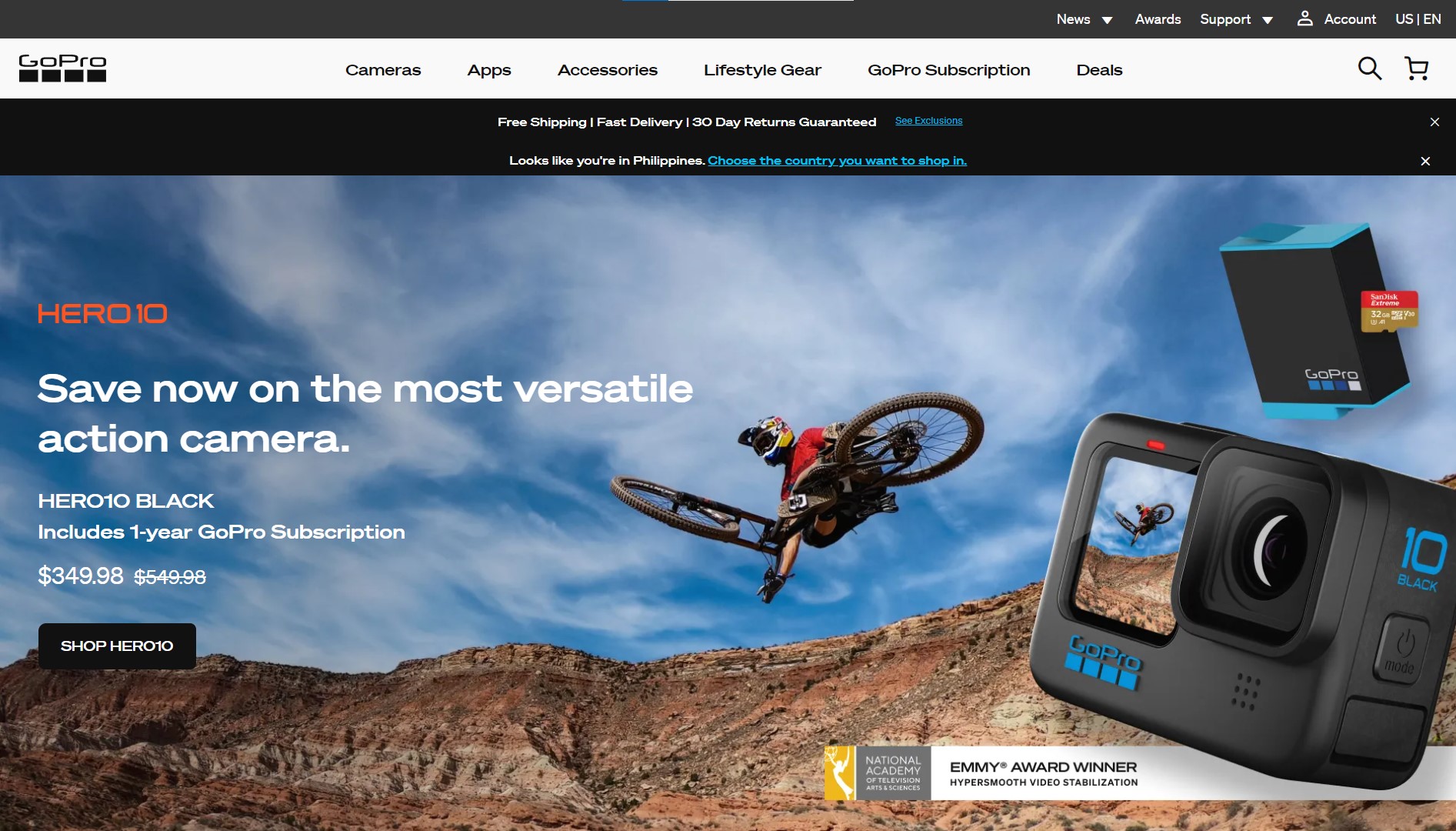
One of the most popular examples of GoPro’s content marketing efforts is its “GoPro Awards” program, which rewards users for submitting videos using a GoPro camera. As part of the awards program, GoPro chooses winning videos and then shares them on social media and through other channels.
3. HubSpot
The leading inbound marketing platform uses content marketing in many different ways to promote its brand, educate potential customers about the benefits of using inbound marketing, and show off what it can do for businesses.
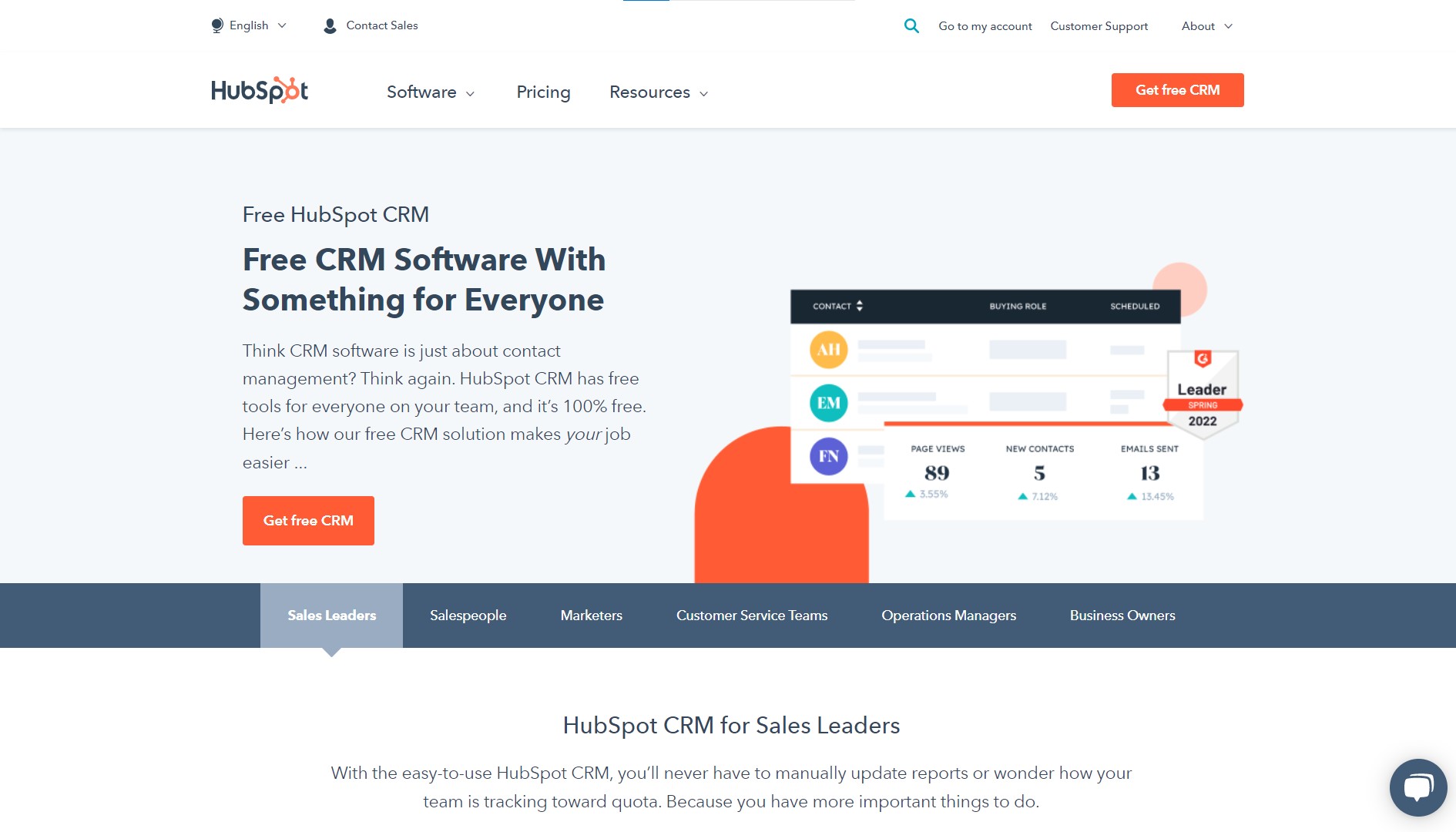
One great example is the HubSpot Academy, which offers free online courses on topics like SEO, email marketing, and social media. These courses help build trust with potential customers while also providing valuable information.
4. Marriott
For years, the hotel chain has been using content marketing to connect with its customers. In 2009, they launched their “Travel Brilliantly” campaign, which featured stories of how Marriott is making travel more enjoyable for its guests.
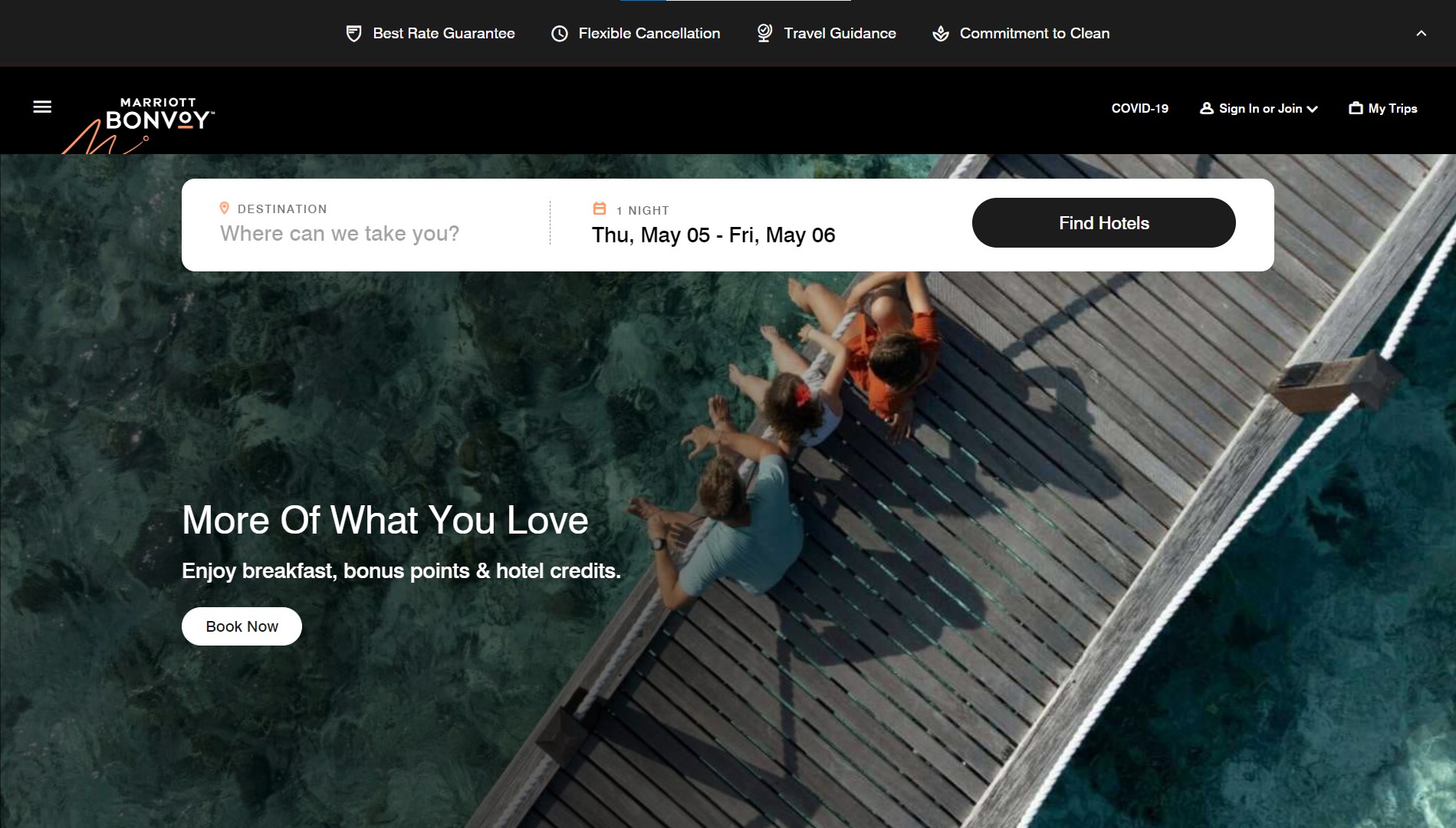
The campaign included blogs and videos, as well as a social media presence. This content marketing campaign helped to show potential customers that Marriott truly understands the travel experience and is dedicated to providing guests with excellent service.
5. Red Bull
The energy drink company is well-known for its extreme sports sponsorships and content marketing efforts. They produce a variety of content, including video series, documentaries, and articles that showcase the exciting lifestyles of their target market: young adults who are into action sports.
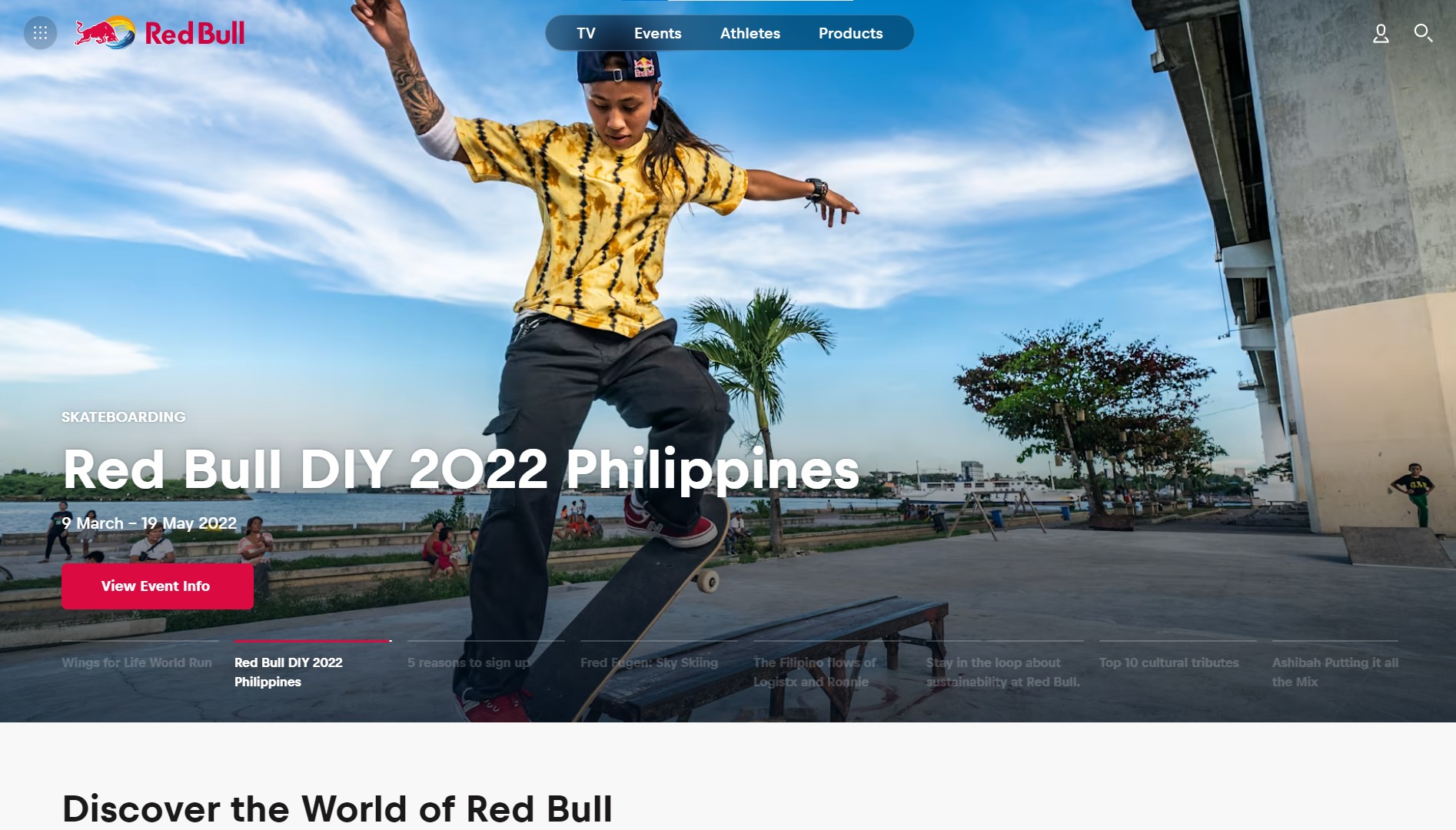
Not only does Red Bull’s content reach a wide audience, it also helps to build positive brand associations and inspire people to try out new sports and activities.
This content is then distributed across multiple channels, including TV, social media, and online publications.
6. TEDTalks
This popular online video series has used content marketing in an incredibly smart way. Their videos have been viewed more than one billion times, and they have built a global community of followers who eagerly watch their new releases every week.
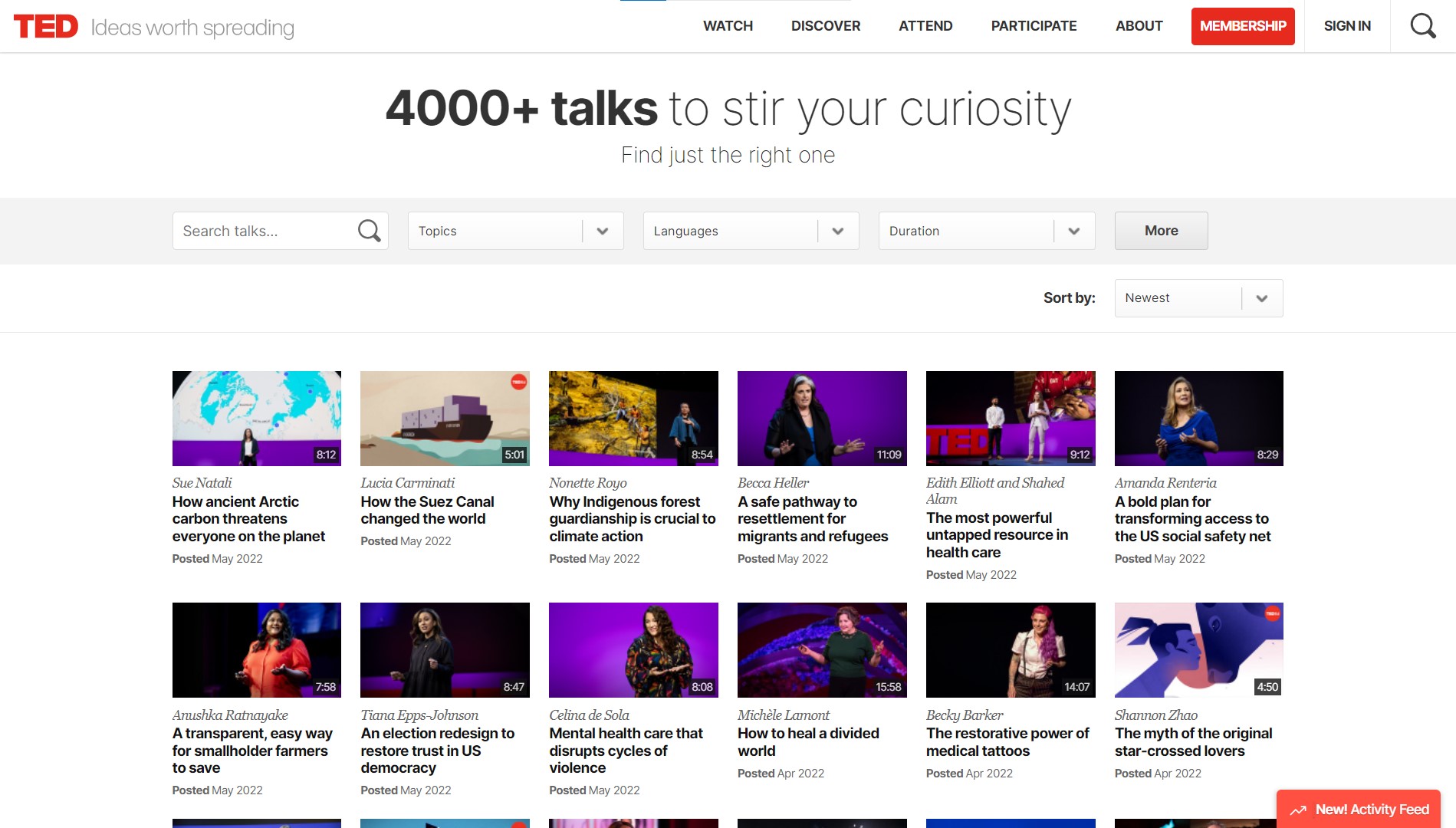
To achieve this success, TEDTalk's content is always engaging, educational, and inspiring. The videos are also short (usually under 20 minutes), making them the perfect length for today's busy online audience. They are also shareable, thanks to their catchy titles that pique curiosity.
As you can see, these content marketing examples utilize a variety of creative and effective ways that help build brand awareness, connect with customers, and achieve their business goals.
But large companies aren't the only ones that have seen success in content marketing (although, of course, everyone started small); even small to medium businesses have achieved great heights with content marketing.
In recent years, small and medium-sized enterprises (SMEs) have increasingly turned to content marketing as a way to promote their businesses. And with good reason: content marketing can be an extremely effective way to reach and engage potential customers.
\What's more, it's relatively affordable and easy to get started. Perhaps most importantly, though, done right, it can help businesses build long-term relationships with their customers. There are plenty of examples of SMEs that have used content marketing to great effect.
Let's talk about content marketing examples of SMEs that succeeded in using content marketing for promotions.
7. Making Sense of Cents
This blog's main strategy for attracting clients and subscribers is simple—it provides amazing blog content that everyone is dying to read. From hundreds of readers, this Work from Home blog has now amassed millions of loyal followers just waiting for the next content to be posted.

Its content marketing strategy focused on blog posts that were SEO-optimized and contained keyword-rich titles. The blog's posts are also shareable on social media, which helps increase its reach even further.
8. MindBodyGreen
This health blog started out as a simple passion project for its founder—now, it's grown into a leading destination for all things wellness-oriented. Mindbodygreen uses creative headlines and interesting photography to draw readers in and then keeps them coming back for more with helpful, informative articles.
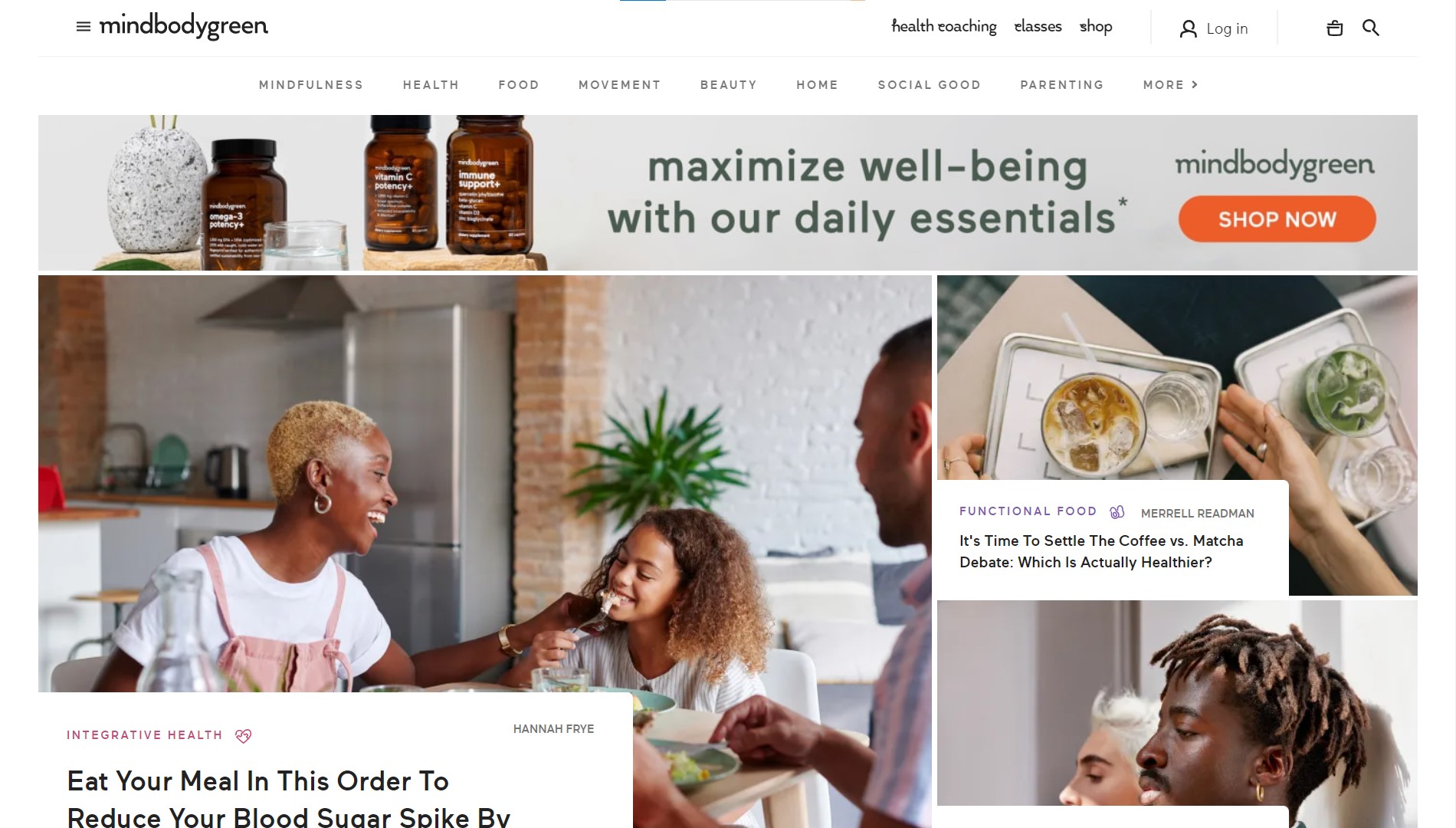
The blog covers a wide range of topics related to health and wellness, including fitness, nutrition, mental health, and more. And its content is shareable on social media, which helps it reach an even wider audience.
Content Marketing Frequently Asked Questions
What is Content Marketing?
Content marketing is the process of creating and sharing valuable content with your target audience to achieve specific marketing goals. Click here to read the comprehensive answer to this question.
Does Content Marketing Work?
There is no simple answer to this question, as content marketing can be highly effective in certain situations and less so in others.
However, many businesses have successfully used content marketing to reach new customers, build brand awareness, increase website traffic, generate leads or sales, and more.
How Do I Get Started with Content Marketing?
There are a number of steps involved in launching your own content marketing campaign. Some key steps include identifying your target audience and creating high-quality content that resonates with them.
You'll also need to identify the most effective distribution channels for your content and measure the performance of your campaigns over time.
To get started with content marketing for your business, consult a content marketing institute, an experienced digital marketing agency, or other trusted resource for guidance. If you want to save money and would like to learn about content marketing yourself, refer to the steps on how to build a content marketing plan that we've detailed above.
Final Thoughts on Content Marketing
Content marketing is a strategic approach to advertising that aims to create and distribute valuable content in order to attract, engage, and acquire customers. This type of marketing relies on creating thoughtful, high-quality content that resonates with current and potential customers.
If you want to be successful with content marketing, it’s important to find the right strategy for your unique business needs and goals. With the right approach, you can use this powerful marketing tool to generate leads, grow your customer base, and increase sales.
Need help creating a content marketing strategy and a content distribution plan? Send us a message, and we'd be happy to assist!
If you like this article, you might also be interested in these:
-
Native Advertising vs. Sponsored Content: Choosing The Right Fit
-
Ultimate List of Content Promotion Tools for Marketers
-
Branded Content, Native Ads & Content Marketing Compared
-
How to Build the Right Content Strategy for Native Ads
-
Native Advertising vs Content Marketing
-
Long Form Content Vs Short Form Content: Which Is Better?
-
Content Distribution - The Content Marketer's Secret to Scaling Fast
-
The Truth About Content Advertising

